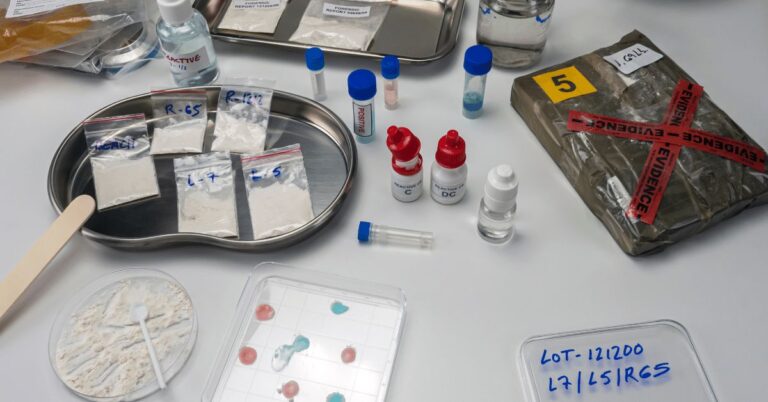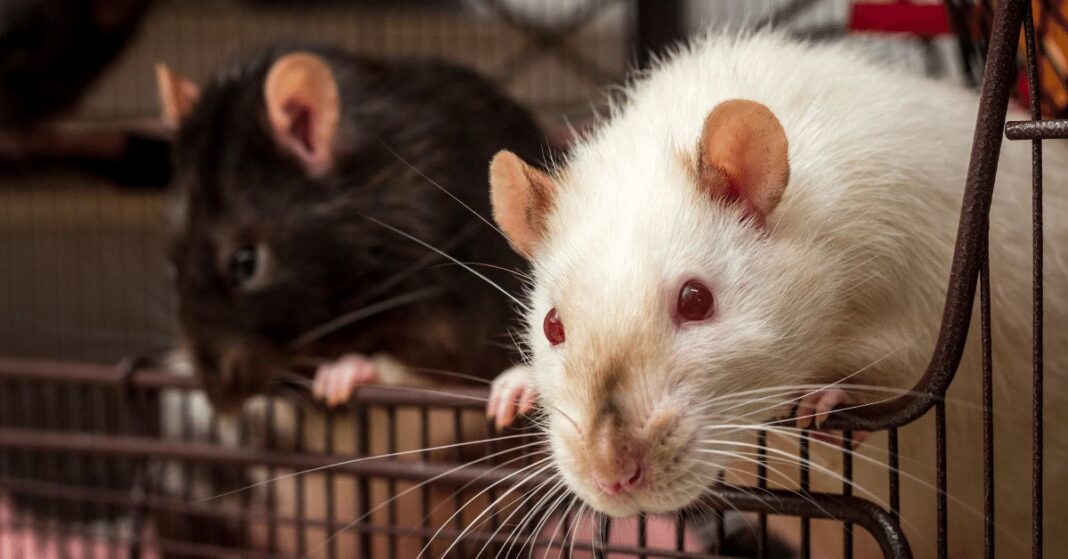Introduction
If you’re looking for a pet rat, the Siamese rat is an excellent choice. This flashy rat is incredibly popular, and good breeding stock does well on the show bench. Unfortunately, good quality Siamese rats have been scarce in recent years. Fortunately, some breeders have made a serious effort to improve their rat’s health and appearance. Read on for some useful information.

Siamese Rat Price
The price of a Siamese rat will vary depending on its location, the breed, and the number of genes it carries. The color of the body should be a medium beige with dark points and gradual shading over its back and hindquarters. The eyes should be red or light ruby. The hair should be short, and the tail should be black. If there are white spots or feet, the rat is disqualified from competition.
When buying a Siamese rat, make sure to find one that is a male. Males tend to have better color than females and are more likely to show. Female Siamese rats rarely develop shading. Their back and tails should be covered in color. If they have any white or light toes, this is not acceptable. It is okay to buy a rat that has light toes during the summer.
When evaluating the price of a Siamese rat, keep in mind the costs associated with ongoing food. Depending on the breed, owners can expect to spend anywhere from $10 to $20 a month on food. Buying a larger package of food will cut down on frequent trips to the store. If you are looking to save money, consider buying multiple rats and getting a discount. Additionally, you will need a suitable cage for your rat. The cage cost will vary according to the size and material of the cage.
Blue Point Siamese Rat
The Siamese rat is an extremely popular pet, and they are very easy to care for. Their coat is made up of distinctive patterns, including the blue point, Seal point, and Merle. The pattern is unusual because it is caused by a trait called acromelanism. Because the color of a rat’s fur is affected by temperature, colder areas of its body will be darker than warm areas. Because of this, a Siamese rat is darker in winter, and lighter in summer.
Although the original Blue Point Siamese were bred in the UK, the colour of the first breeds was not uniform. The original colour was a pale silver, with blue points. This colouration was not uniform, and they were not standardised. Then, the blue gene was introduced from Russia, which improved the colour of the Blue Points. Fortunately, the gene was passed down through the generations, and the Blue Points have become the most popular type of Siamese rat.
The original ancestors of Siamese rats were white with silver fawn hoods. They were relatively common, but their reputation for being mean made many pet shops stop buying them. Fortunately, some dedicated breeders have worked hard to improve the Siamese rat to its present-day form. But if you’re considering getting a new pet for your home, it’s best to purchase from a reputable breeder.

Siamese Rat for Sale
You should buy a Siamese rat for sale from a reputable breeder. While these rats are flashy and popular, they have a reputation for being difficult to care for. Getting a good Siamese rat is not easy, and it can take several generations to completely eliminate the white on its feet. The best way to prevent this is to outcross to a good Self Black, which has pigment down to the toenails.
Before purchasing a Rat for sale, you should know all about its physical and emotional needs. They require ample attention, stimulation, and space to move around. A good rat will need its own cage, as well as plenty of room to play and exercise. They should have a solid floor and a well-ventilated wire home. Finally, they should be provided with other rats to socialize with. A new owner should be sure to consider the entire effect of their choice.
Rats are best kept in pairs or groups of the same sex, although they can be kept as a single pet. It is best to adopt two or more rats at once, as one of them can be a bit lonely if it has no other friends. Female rats are smaller than males, so they can slip into a wide cage bar spacing. If your new rat will be alone, make sure to quarantine it for a period of time to ensure that it does not get into mischief. Generally, the older rats are adopted out with their same-sex offspring or retired companions.

Siamese Rat Lifespan
The lifespan of a Siamese rat is around four months, which is not too long considering that the species is relatively small. This is due to the fact that a rat’s lifespan is largely determined by genetics and the type of coat the rat has. The lifespan of the Siamese rat varies depending on its origin and breed. A study published in the journal Ratty Corner found that rats with top ears had a longer lifespan than their dumbo counterparts. However, their lifespans were still very close to the global average.
The longest rat ever recorded was Rodney, born in Oklahoma in 1983 and living until 1990. This rat lived for seven years, far exceeding the lifespan of the average pet rat. Although Rodney was a rare specimen, the average lifespan of a pet rat is two to three years. The oldest recorded dog lived for 29 years and five months, and the average dog lifespan is about 11 years. This shows that pet rats are generally more comfortable in homes with people than in the wild.
The life span of a Siamese rat varies based on breed, location, and environment. In captivity, a pet rat may live up to seven years, but most pet rats are sold at around two years. The lifespan of a wild rat may be less than one year, but the pet lifespan should not exceed two years. If you’re considering a new pet, it’s best to get one six to eight weeks old.

Siamese Rat Names
While you can use the common name “Siamese” for your rat, you should think about the unique qualities of your new pet. Some rats have long nails, while others are social creatures and may prefer a name that reflects their personality. Listed below are a few ideas for cool names for your rat. To make your search more fun and memorable, consider combining several names. Alternatively, you can choose to have your rat named after its favorite food or personality.
Male rats are naturally more aggressive and will try to run away if they feel threatened. Females are less likely to chase or run away from their humans. Nevertheless, females are more docile and easy to train than male rats. If you have a pair of males, naming them after each other will help them bond. You can use names that tie in with the gender of each pair of rats, as male rats will get along better with other males.
The two most common breeds are the Himalayan and Siamese. The former has a beige-colored body with darker shading on the body parts. The latter is a long-haired variety that is popular in the rat world. This particular type was discovered in 2002 and was later named Harley. It was later found that Harley had given birth to a litter of pups. It has become one of the most popular pet rats.
Types of Siamese Rats
The different types of Siamese are categorized based on their coat colours. Generally, Siamese rats are cream-coloured and are considered BE or RE. Silvermane rats, also known as REs, are lighter versions of Siamese. They carry either a single colorpoint gene or a combination of both. The body is white, while the face is blue-black with pale spots. These rats have the characteristic “Silvermane” fur.
Male Siamese rats are better suited for breeding than female ones. Female Siamese rats are rarely sexy. Nevertheless, the males are better for show animals than females. The female Seal-point Siamese Rats are more bland-looking than their male counterparts. Although this trait is often associated with female Seal-point rats, many breeders are now working to improve the breed.
The different types of Siamese rats are defined by the AFRMA. These varieties differ in body type, color, ear shape and other features. Depending on their health and temperament, a rat may be a member of more than one variety. Among these, the Dumbo rat has large, round ears. And the sex-neutered Dumbo variety is the tastiest, and most commonly kept.

Siamese Rat
The Siamese rat is one of the most beautiful rodents, with a beige base color and darker shading on different parts of the body. These rats have been domesticated for centuries and are one of the most intelligent rodents. This variety is also known as the Harley rat in the rat world, after a female named Harley was found giving birth to a litter of babies. Although this variety has a longer coat, it is still classified as a Siamese rat.
The number one flaw of the Siamese rat is its white feet. Their feet can be white all the way to the wrist, or just a few toes. In this case, it is best to avoid breeding these rats and instead use other colors. In this case, they will turn darker in winter and lighter in summer. If you want your own Siamese rat, you should not breed it with a white foot!
A male Siamese rat is more desirable for show purposes than a female. This is because the female rarely develops shading. In addition, the back and legs of the Siamese should be covered with a substantial amount of color. It should not have a white foot, although light toes may be acceptable. You should never select a female with white points. If you are planning to show your Siamese rat, it is best to show it in winter months.

The Siamese Rat
Listed below are the characteristics of the Siamese rat, including its color, coat, and markings. This article focuses on the male siamese, since the females are not as likely to show shading. If you want to show your rat, make sure you choose a male. The male should have a significant amount of color all the way up the back and be free of any little brown spots near the base of its tail. While the color of a Siamese rat is acceptable in the winter months, its color will fade during the hotter months.

White feet
If you are interested in breeding Siamese rats, you’ve probably noticed the white feet. This problem is quite common among this species, and can range from white hands to white feet. It can also be just a touch of white on the toes. To get rid of white feet, breed a colorpoint Siamese with no white anywhere else. However, the best way to achieve this is by outcrossing with a good Self Black rat with pigment from the toenails to the feet.
As a result of the bad reputation for these rats, many pet shops stopped selling them. Today, you can find them for sale in pet stores as feeders, but it’s important to remember that Siamese are very easy to ruin and may take several years to remedy. Fortunately, dedicated breeders are working hard to make the Siamese rat more aesthetically pleasing. When choosing a Siamese rat, make sure to get one from a reputable breeder.
If you want your pet to show in shows, it’s best to get a male Siamese rat. Females rarely develop shading, so you should opt for males if possible. While a white foot is fine in warm weather, it can ruin a good show. If you’re going to show a Siamese in the summer, try to pick a color that is consistent with the temperature of its environment.
The first Siamese were actually Silver Fawn Hooded rats with a slight dark point on their nose. They later developed into beautiful Siamese rats. It took a decade for the first breeding program to be conducted in the United States, but the success of this program was undeniable. The National Fancy Rat Society was able to import these pets from France and eventually produced the first litters. This was enough to establish the first Siamese line in the United States.
Dark Points
The name Siamese means “without qualification.” The term “Siamese without qualification” refers to any color of the rat and is the most popular. The seal-pointed Siamese is a classic example of the breed’s beauty. Its rich ruby eyes make it a sought-after breed. A few breeders have attempted to improve the Siamese rat.
The siamese rat is born with creamy brown fur and does not develop the characteristic points until the first moult. Because of this, it’s difficult to select one for a breeding program or for the show ring. As a result, many pet shops have resorted to producing hairless animals in their breeding program. Dark points on the siamese rat are the result of genetic engineering.
A good Siamese specimen should have all the dark points, along with a beige-colored body. These points should extend up the spine and should be present on the paws, toes, tail, and tip. The tail should also be dark to enhance the lines of the rat. A dark tail is also essential for a show quality rat. There are several ways to improve the appearance of the tail and paws of a Siamese rat.
Unlike other animals, Siamese rat’s points can be different shades. A good black can help darken the points, and the shading can be improved. While the shading is more visible on males than females, it can be difficult to detect in an early breeding. However, if the breeding process is done correctly, it can produce very nice animals. So, if you want to improve the shading of your siamese rat, keep in mind that breeding the darkest points will produce good animals.

Shades of Gray
The genes determining the color of a rat’s coat are called polygenes. A rat’s color is determined by two different genes called agouti and albino. These genes are recessive, but one is dominant over the other. In some cases, the two alleles are different, so a rat with a white coat may be blue-gray.
The Russian blue colour is also common, though the colour can have a brown tinge. The NFRS standard is dark blue ticking over fawn ground, and the belly and undercolour must match. If the ticking has a brown tinge, it is not a good sign. The eye colour must also be black. The siamese rat is classified as either a blue or a brown-grey variety.
The Siamese rat’s coat has a thermosensitive trait that is essential for its visual appeal. The rat’s body is typically pearl-gray, beige, or light cream in color. During the winter, the body parts are darker. Keeping this in mind, you should try to outcross a good Self Black for the animal’s bare feet.
Besides the eyes, there are other genes that affect the coat color. The blue gene can cause a rat’s fur to become paler than other shades. The blue gene can also cause the coat to become darker, which is referred to as “blue”. The white color is called dd. The blue gene is inherited from both parents, and both are equally desirable. It is important to note that blue is recessive in the UK, while blue is dominant in Canada.
The Siamese rat’s coat is mostly white with dark points, but you can also find a variety with black eyes. These are very similar to ruby-eyed Siamese, but have a slightly warmer overall color. If the black eyed variety has a darker body and lighter tail, it is likely to be non-agouti. A non-agouti Siamese must also have two copies of both the Himalayan and black eyed genes.
Black Eyes
If you’ve ever wondered what makes siamese rats have black eyes, you’ve come to the right place. This bi-colour rat is strikingly marked and is quite different from the other types. Born a solid color, it begins to exhibit roaning at about 4 to 6 weeks of age. As the roaning progresses, the rat’s white hairs gradually intermingle with the solid colour. This process begins at the face and sides and continues up to the tail root. It becomes lighter with each moult, with roaning most apparent on the sides and face.
The gene responsible for black eyes on the Siamese rat’s coat is sensitive to temperature, so breeding for dark shading is necessary. The coat of the Siamese rat is usually spotted with unusual markings due to moulting and fur growth lines. It is a good idea to choose a reputable breeder with experience breeding these animals to avoid problems with uneven coloring. This will help you select the most beautiful and healthy looking rats for your collection.
Several genes are responsible for black eyes in the Siamese rat. Some genes cause blazes and headspots, while others can dilute the colour. Topaz and champagne rats are particularly susceptible to this trait. But in any case, it’s worth keeping an eye out for a rat that has a black eye. It may look like a pretty red eye, but that’s not how the eyelids work.
The black rat is actually a mix of two genes – the blue gene and the red eye dilution gene. This means that a black rat could be a pink/red eyed rat, but the resulting rat would have a magnolia-colored eye. Of course, the black color can also be diluted with other colors and markings. In some cases, these genes may exist simultaneously, resulting in a gray-colored rat with red eyes.
Temperature sensitive coat
The color of the fur of the Siamese Rat depends on the temperature of its surroundings. This makes it difficult to select rats for breeding or for showing in shows. Siamese rats are born with a cream-colored coat. This coat gradually develops points on the body after their first moult. Breeding for dark shading requires careful selection, since the coloration changes greatly as the rat grows older.
The Seal-pointed Siamese Rat has a bright coat and does well on the show bench. The breeding of this species was affected by greedy pet stores, but some breeders have worked hard to improve the species. Male Seal-point Siamese Rats are generally preferred by show breeders, while females tend to have blander coloring. However, both sexes are beautiful, so they are great pets for children and pets alike.
The color of the Siamese Rat is highly sensitive to temperature. Males should have more color on their backs than females. A female Siamese Rat should not have any little patches of brown on the back. The coat of a Siamese should be dark enough to show in colder weather. A Siamese Rat with white feet is acceptable in warmer weather, but they do not show as well in summer.
The color of the Siamese Rat does not matter in the long run. However, some colors do have noticeable effects on the rat’s health. Blue rats are less healthy than their white counterparts. In addition, some rats have the capacity to express shading genes, which cause their coat to pale or even black in temperature. The Himalayan shading gene is responsible for the temperature-sensitive paling of the Siamese Rat’s coat color.






